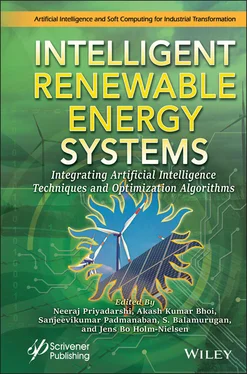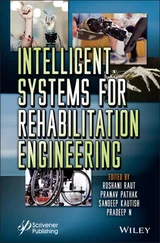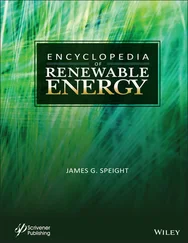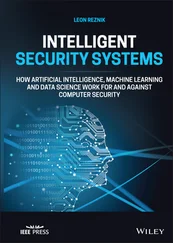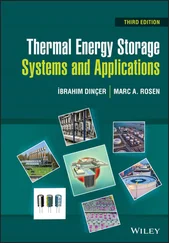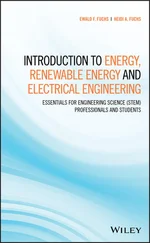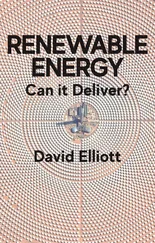Intelligent Renewable Energy Systems
Здесь есть возможность читать онлайн «Intelligent Renewable Energy Systems» — ознакомительный отрывок электронной книги совершенно бесплатно, а после прочтения отрывка купить полную версию. В некоторых случаях можно слушать аудио, скачать через торрент в формате fb2 и присутствует краткое содержание. Жанр: unrecognised, на английском языке. Описание произведения, (предисловие) а так же отзывы посетителей доступны на портале библиотеки ЛибКат.
- Название:Intelligent Renewable Energy Systems
- Автор:
- Жанр:
- Год:неизвестен
- ISBN:нет данных
- Рейтинг книги:5 / 5. Голосов: 1
-
Избранное:Добавить в избранное
- Отзывы:
-
Ваша оценка:
- 100
- 1
- 2
- 3
- 4
- 5
Intelligent Renewable Energy Systems: краткое содержание, описание и аннотация
Предлагаем к чтению аннотацию, описание, краткое содержание или предисловие (зависит от того, что написал сам автор книги «Intelligent Renewable Energy Systems»). Если вы не нашли необходимую информацию о книге — напишите в комментариях, мы постараемся отыскать её.
This collection of papers on artificial intelligence and other methods for improving renewable energy systems, written by industry experts, is a reflection of the state of the art, a must-have for engineers, maintenance personnel, students, and anyone else wanting to stay abreast with current energy systems concepts and technology.
Audience
Intelligent Renewable Energy Systems — читать онлайн ознакомительный отрывок
Ниже представлен текст книги, разбитый по страницам. Система сохранения места последней прочитанной страницы, позволяет с удобством читать онлайн бесплатно книгу «Intelligent Renewable Energy Systems», без необходимости каждый раз заново искать на чём Вы остановились. Поставьте закладку, и сможете в любой момент перейти на страницу, на которой закончили чтение.
Интервал:
Закладка:
The proposed method has been coded in MATLAB software and compared with four different optimization methods, such as PSO, TLBO, CS and SOS, available in the literature. For the comparison purpose, the CEC-2005 benchmark functions have been considered, and the comparison has been made from the point of view of best FF, worst FF, mean, standard deviation and rank. For almost all benchmark functions, the proposed SPBO method has been provided the better results. Therefore, it can be concluded that the proposed method is superior than the other four methods considered in this book chapter.
The multi-objective RDGs and capacitors sizing and placement study has been carried out considering the variable load demand of a day. After the placement of biomass DG, solar PV, and shunt capacitors to the 33-bus and 69-bus distribution network using mixed discrete SPBO algorithm, it may be noticed that the active power loss reduction for all the load demands of the day and for both the considered distribution networks is quite significant. Significant reduction of VDI may also be noticed after the placement of DGs to both the distribution networks and for all the different load hours. The effective annual installation cost is also found to be less for both the distribution networks.
From the study, it may be concluded that the proper placement of biomass DG, solar PV, and shunt capacitors may lead to a significant reduction in active power loss, VDI, as well as effective annual installation cost, for both the considered 33-bus and 69-bus distribution networks. It is also worth mentioning that the mixed discrete version of SPBO is capable to optimize the sizes and locations of the DGs simultaneously in order to achieve the desired objective. It can also be concluded that the mixed discrete SPBO is very much capable to optimize both continuous and discrete variables simultaneously.
References
1. Acharya N., Mahat P., and Mithulananthan N. (2006) An analytical approach for DG allocation in primary distribution network. Int. J. Electr. Power Energy Syst. 28(10):669-678.
2. Gözel T., and Hocaoglu M.H. (2009) An analytical method for the sizing and sitting of distributed generators in radial systems. Electr. Power Syst. Res. 79(6):912-918.
3. Wang C., and Nehrir M.H. (2004) Analytical approaches for optimal placement of distributed generation sources in power system. IEEE Trans. Power Syst.19(4):2068-2076.
4. Hung D.Q., Mithulananthan N, and Bansal R. C. (2010) Analytical expressions for DG allocation in primary distribution networks. IEEE Trans. Energy Convers.25(3):814-820.
5. Aman M.M., Jasmon J., Mokhlis H., and Bakar A. (2012) Optimal placement and sizing of a DG based on new power stability index and line losses. Int. J. Electr. Power Energy Syst. 43(1):1296-1304.
6. Celli G.,Ghiani E., Mocci S., and Pilo F. (2005) A multi-objective evolutionary algorithm for the sizing and sitting of distributed generation. IEEE Trans. Power Syst. 20 (2): 750-757.
7. Falaghi H., and Haghifam M.R. (2007) ACO based algorithm for distributed generation sources allocation and sizing in distribution systems. In: Proc. IEEE Power Tech.: 555-560.
8. Al Abri R.S., El-Saadany E.F., and Atwa Y.M. (2013) Optimal placement and sizing method to improve the voltage stability margin in a distribution system using distributed generation. IEEE Trans. Power Syst. 28(1): 326–334.
9. Borges C.L.T., and Falcao D.M. (2006) Optimal distributed generation allocation for reliability, losses and voltage improvement. Int. J. Electr. Power Energy Syst. 28 (6):413-420.
10. Priyadarshi.; N;, Padmanaban, S.; Maroti, P.K.; Sharma. A.; An Extensive Practical Investigation of FPSO-Based MPPT for Grid Integrated PV System Under Variable Operating Conditions With Anti-Islanding Protection. IEEE System Journal, 2018, 13:1861 - 1871.
11. Priyadarshi, N.; Padmanaban, S.; Bhaskar, M.S.; Blaabjerg, F.; Sharma, A.; A Fuzzy SVPWM Based Inverter Control Realization of Grid Integrated PV-Wind System with FPSO MPPT Algorithm for a Grid-Connected PV/Wind Power Generation System: Hardware Implementation. IET Electric Power Appl., 2018, 12:962-971.
12. Priyadarshi, N.; Kumar, V.; Yadav, K.; Vardia, M.; An Experimental Study on Zeta buck-boost converter for Application in PV system. Handbook of distributed generation, Springer, DOI 10.1007/978-3-319-51343-0_13
13. Priyadarshi N.; Sharma A.K.; Priyam S.; An Experimental Realization of Grid-Connected PV System with MPPT Using dSPACE DS 1104 Control Board. Advances in Smart Grid and Renewable Energy. Lecture Notes in Electrical Engineering, Springer, Singapore 2018, 435.
14. Priyadarshi N.; Sharma A.K.; Priyam S.; Practical Realization of an Improved Photovoltaic Grid Integration with MPPT. International Journal of Renewable Energy Research 2017, 7:1180-1891.
15. Priyadarshi N.; Sharma A.K.; Azam F.; A Hybrid Firefly-Asymmetrical Fuzzy Logic Controller based MPPT for PV-Wind-Fuel Grid Integration. International Journal of Renewable Energy Research 2017, 7: 1546-1560
16. Priyadarshi, N.; Anand, A.; Sharma, A.K.; Azam, F.; Singh, V.K.; Sinha, R. K.; An Experimental Implementation and Testing of GA based Maximum Power Point Tracking for PV System under Varying Ambient Conditions Using dSPACE DS 1104 Controller. International Journal of Renewable Energy Research, 2017, 7:255-265
17. Priyadarshi, N.; Padmanaban S.; Mihet-Popa L.; Blaabjerg, F.; Azam F.; Maximum Power Point Tracking for Brushless DC Motor-Driven Photovoltaic Pumping Systems Using a Hybrid ANFIS-FLOWER Pollination Optimization Algorithm. MDPI Energies 2018, 11:1-16
18. Priyadarshi, N.; Azam, F.; Bhoi, A.K.; Alam, S.; An Artificial Fuzzy Logic Intelligent Controller Based MPPT for PV Grid Utility. Lecture Notes in Networks and Systems 46, https://doi.org/10.1007/978-981-13-1217-5_88.
19. Padmanaban, S.; Priyadarshi, N.; Holm-Nielsen, J. B.; Bhaskar, M. S.; Azam, F.; Sharma, A.K.; A Novel Modified Sine-Cosine Optimized MPPT Algorithm for Grid Integrated PV System under Real Operating Conditions. IEEE Access, 2019, 7:10467-10477.
20. Padmanaban, S.; Priyadarshi, N.; Holm-Nielsen, J. B.; Bhaskar, M. S.; Hossain, E.; Azam, F.; A Hybrid Photovoltaic-Fuel Cell for Grid Integration With Jaya-Based Maximum Power Point Tracking: Experimental Performance Evaluation. IEEE Access, 2019, 7:82978-82990.
21. Priyadarshi, N.; Padmanaban, N.; Holm-Nielsen, J. B.; Blaabjerg, F.; Bhaskar, M.S.; An Experimental Estimation of Hybrid ANFIS–PSO-Based MPPT for PV Grid Integration Under Fluctuating Sun Irradiance. in IEEE Systems Journal. 2020, 14:1218-1229
22. Priyadarshi, N.; Padmanaban, N.; Bhaskar, M. S.; Blaabjerg, F.; Holm-Nielsen, J. B.; Azam, F.; Sharma, A.K.; A Hybrid Photovoltaic-Fuel Cell-Based Single-Stage Grid Integration With Lyapunov Control Scheme. IEEE Systems Journal, 2020, 14: 3334 - 3342
23. Priyadarshi, N.; Bhaskar, M. S.; Padmanaban, N.; Blaabjerg, F.; Azam, F.; New CUK–SEPIC converter based photovoltaic power system with hybrid GSA–PSO algorithm employing MPPT for water pumping applications. IET Power Electronics. 2020, 13:2824 – 2830
24. Priyadarshi, N.; Padmanaban, N.; Holm-Nielsen, J. B.; Bhaskar, M.S.; Azam, F.; Internet of things augmented a novel PSO-employed modified zeta converter-based photovoltaic maximum power tracking system: hardware realisation. IET Power Electronics. 2020, 13:2775 – 2781
25. Kamalapathi, K., Priyadarshi, N., Padmanaban, S., Holm-Nielsen, J.B., Azam, F., Umayal, C., Ramachandaramurthy, V.K. A Hybrid Moth-Flame Fuzzy Logic Controller Based Integrated Cuk Converter Fed Brushless DC Motor for Power Factor Correction. MDPI Electronics, 2018, 7: 288.
26. Priyadarshi, N., Padmanaban, S., Lonel, D., Mihet-Popa, L., Azam, F. Hybrid PV-Wind, Micro-Grid Development Using Quasi-Z-Source Inverter Modeling and Control—Experimental Investigation. MDPI Energies, 2018, 11:2277
Читать дальшеИнтервал:
Закладка:
Похожие книги на «Intelligent Renewable Energy Systems»
Представляем Вашему вниманию похожие книги на «Intelligent Renewable Energy Systems» списком для выбора. Мы отобрали схожую по названию и смыслу литературу в надежде предоставить читателям больше вариантов отыскать новые, интересные, ещё непрочитанные произведения.
Обсуждение, отзывы о книге «Intelligent Renewable Energy Systems» и просто собственные мнения читателей. Оставьте ваши комментарии, напишите, что Вы думаете о произведении, его смысле или главных героях. Укажите что конкретно понравилось, а что нет, и почему Вы так считаете.
